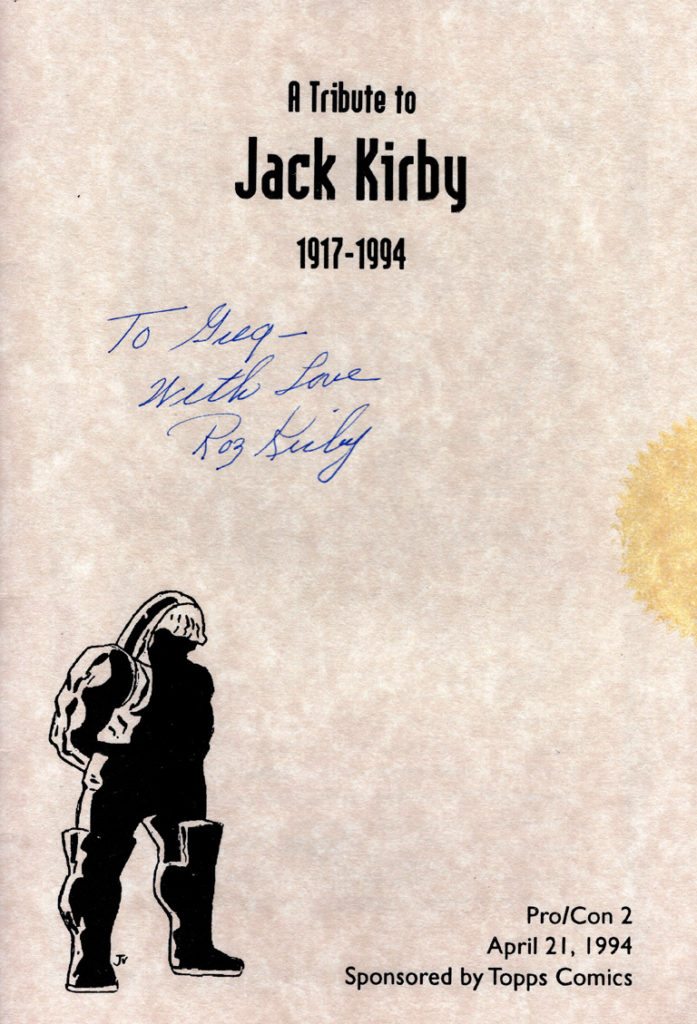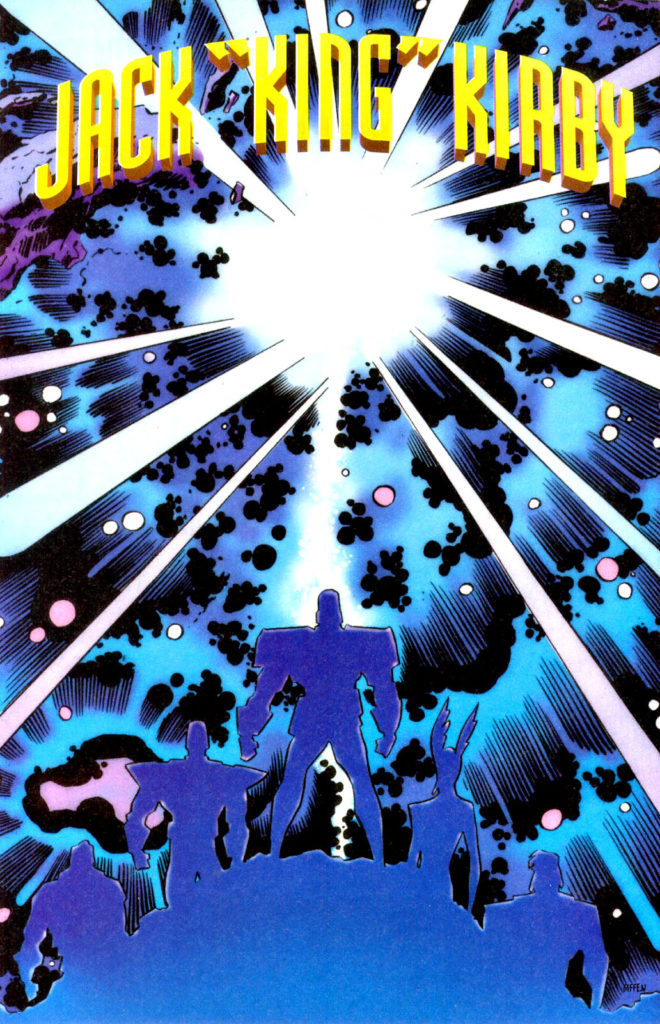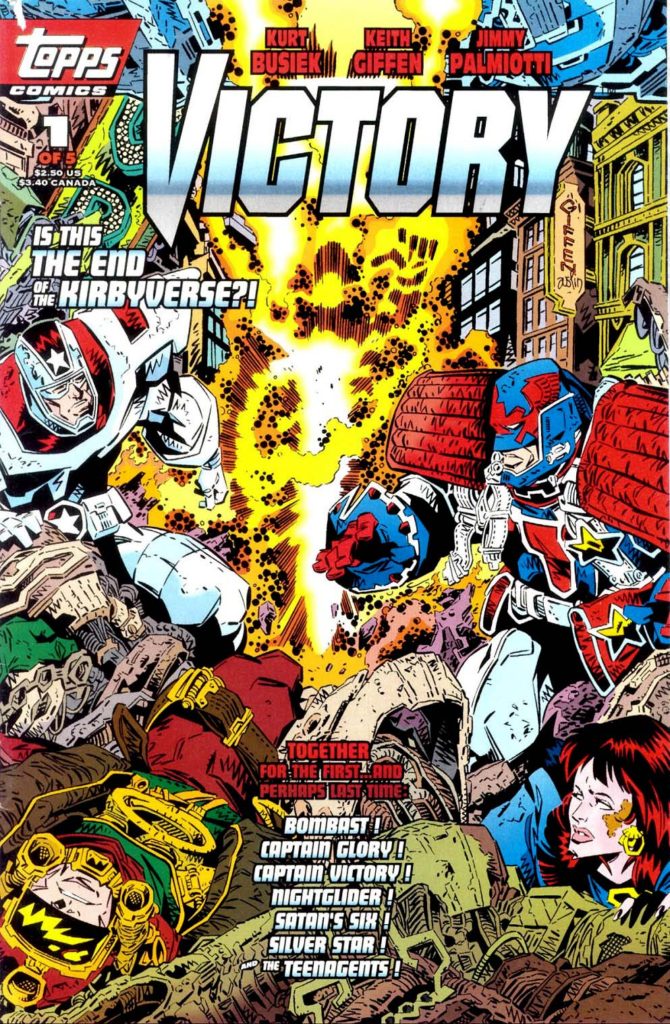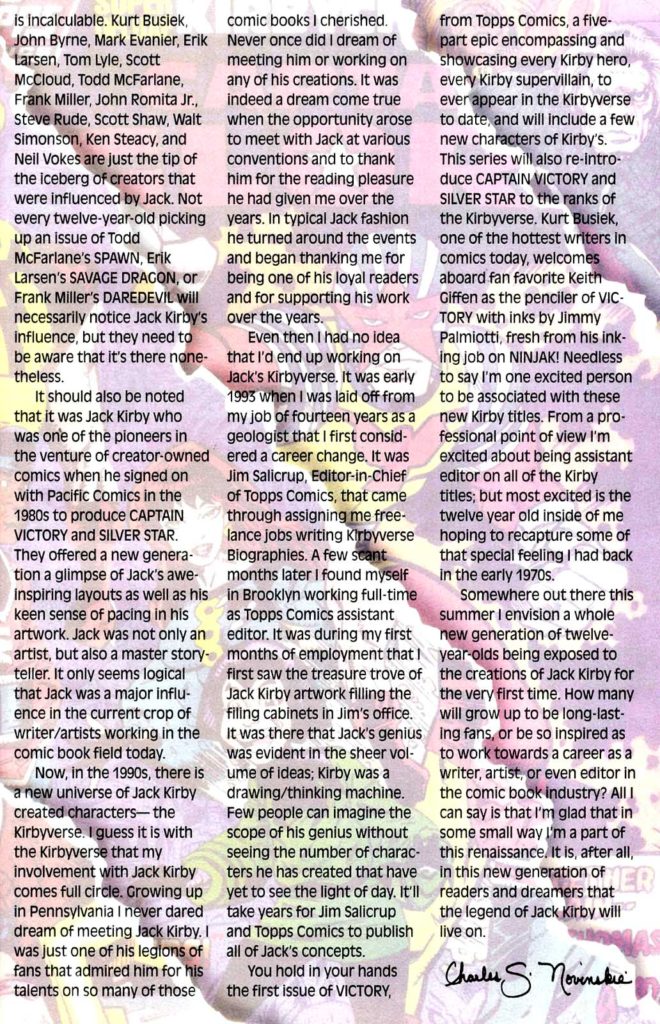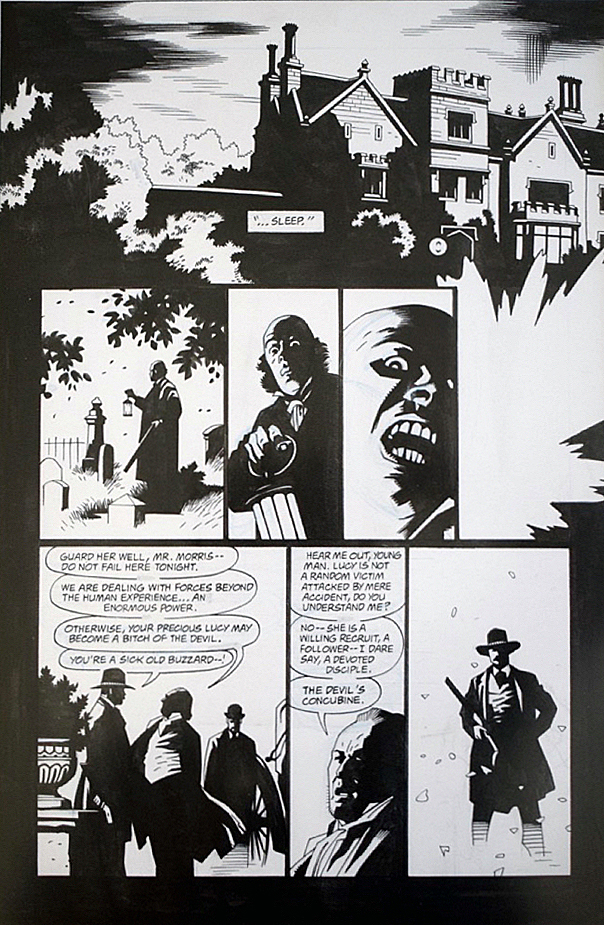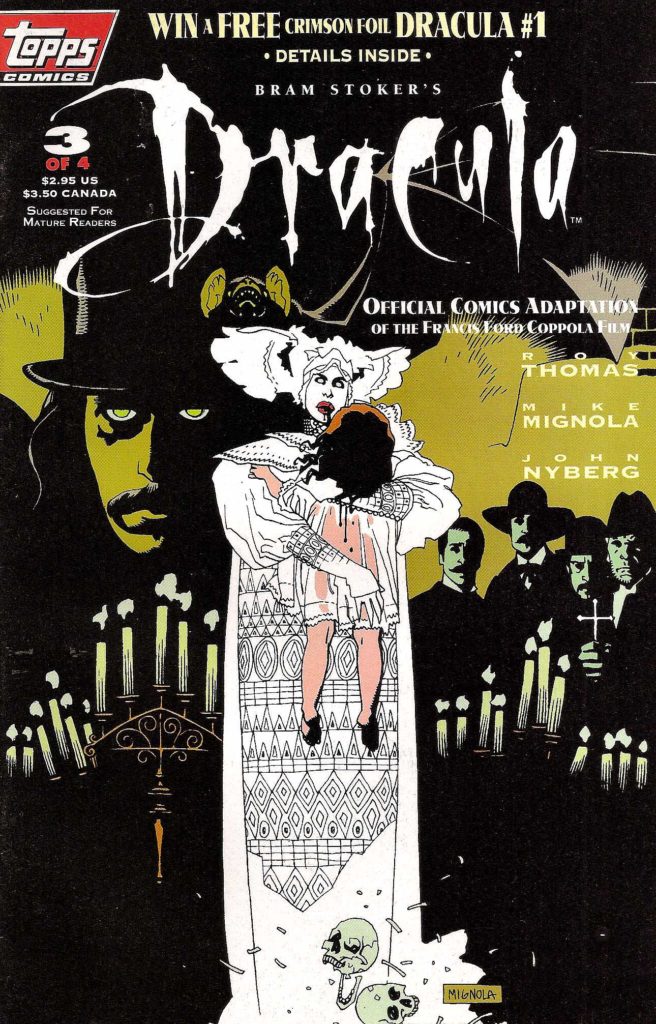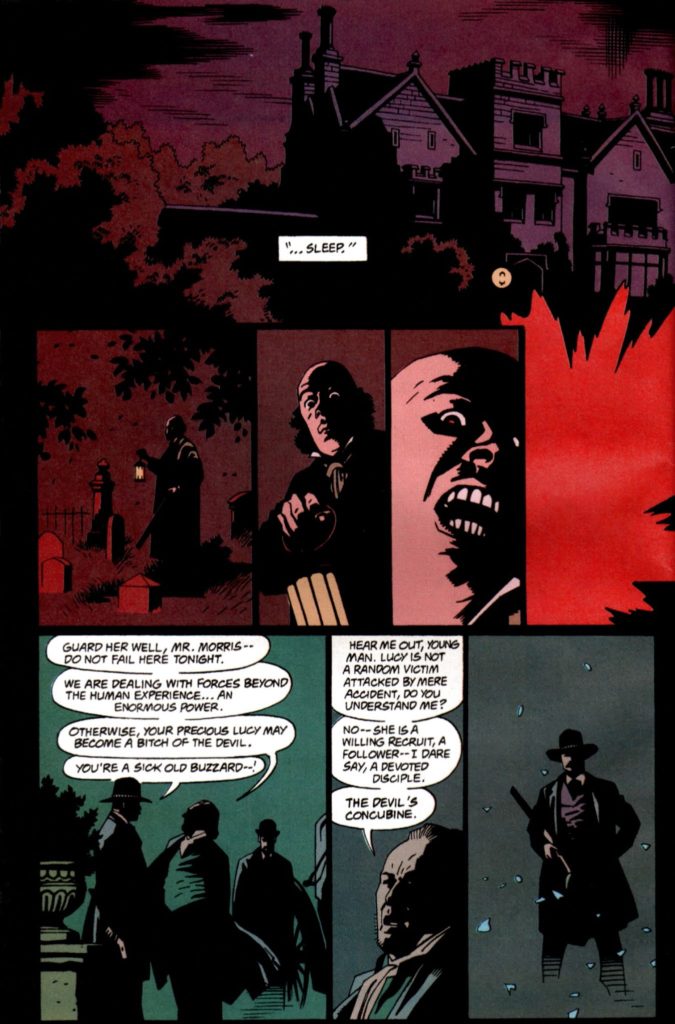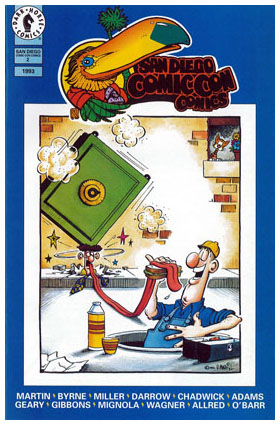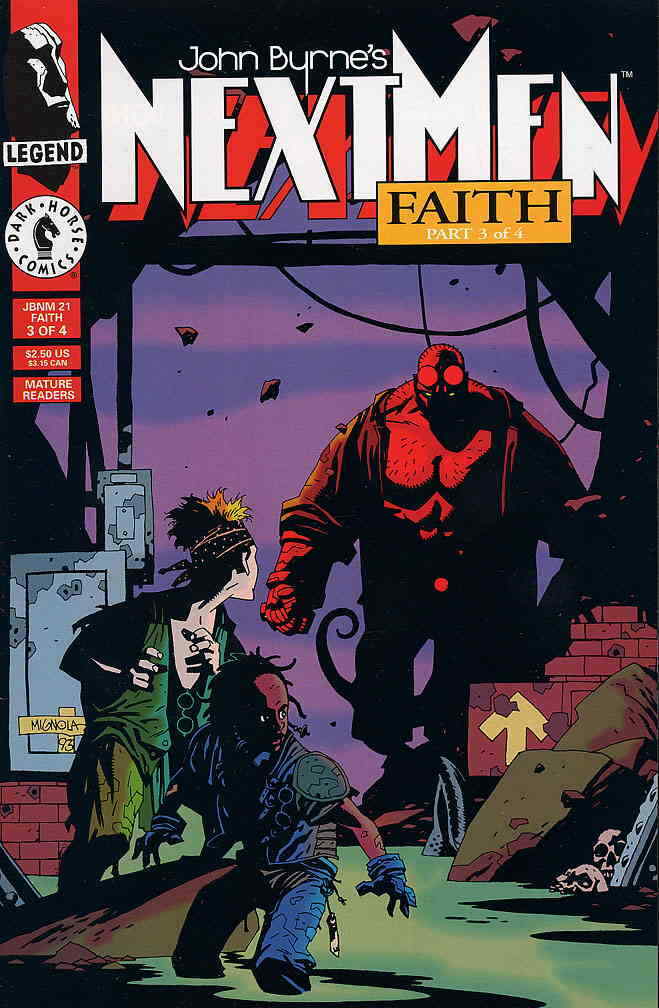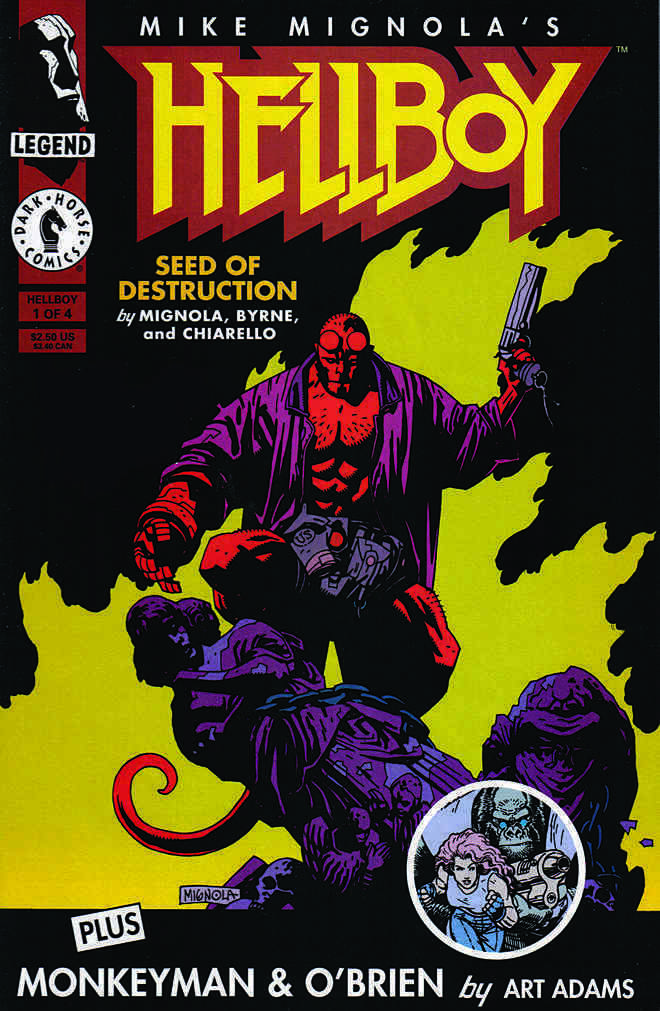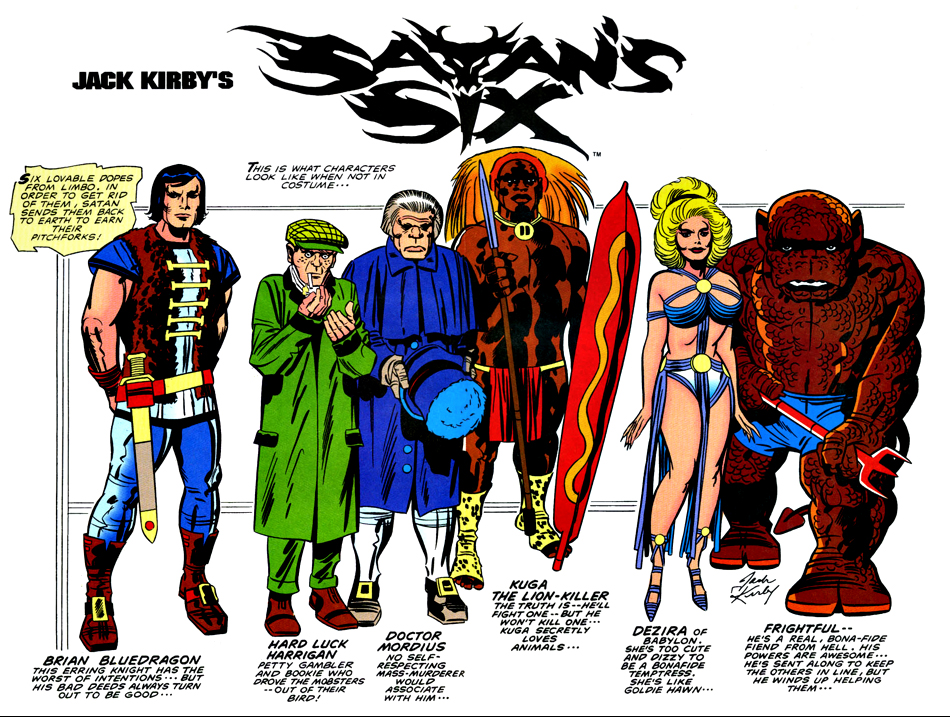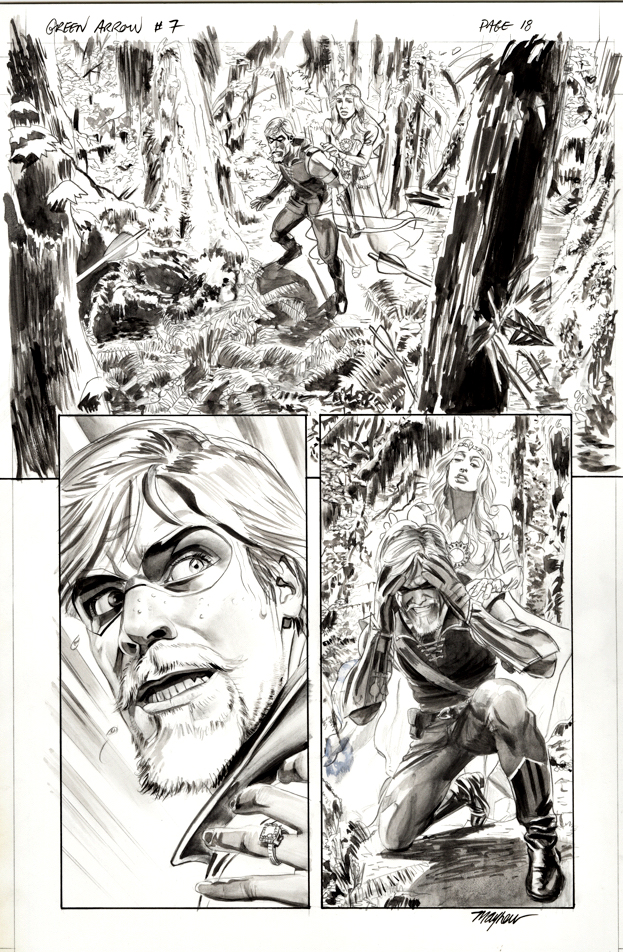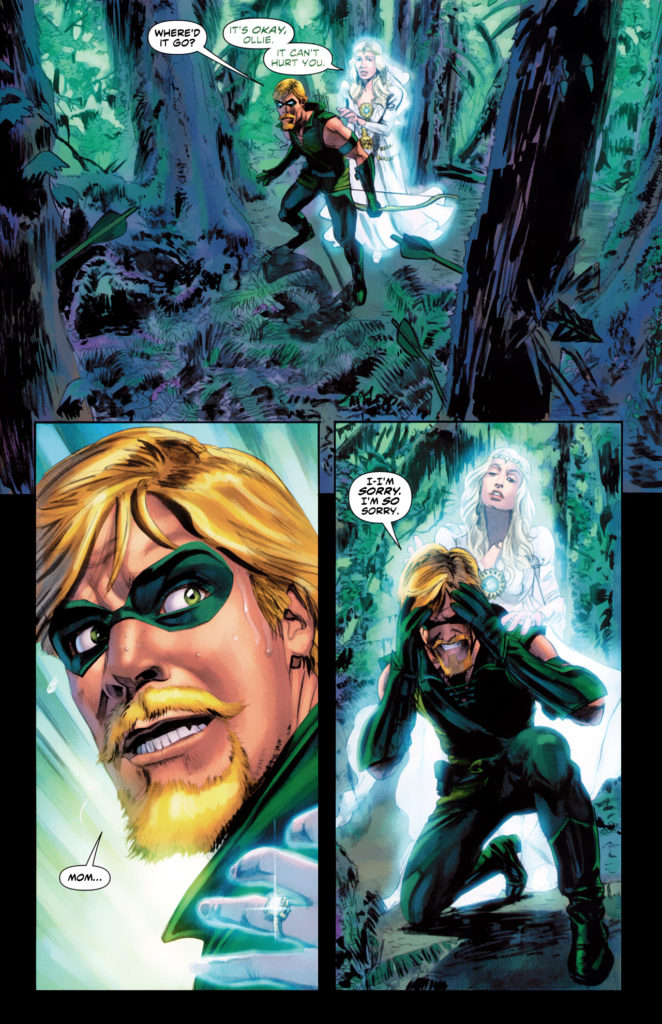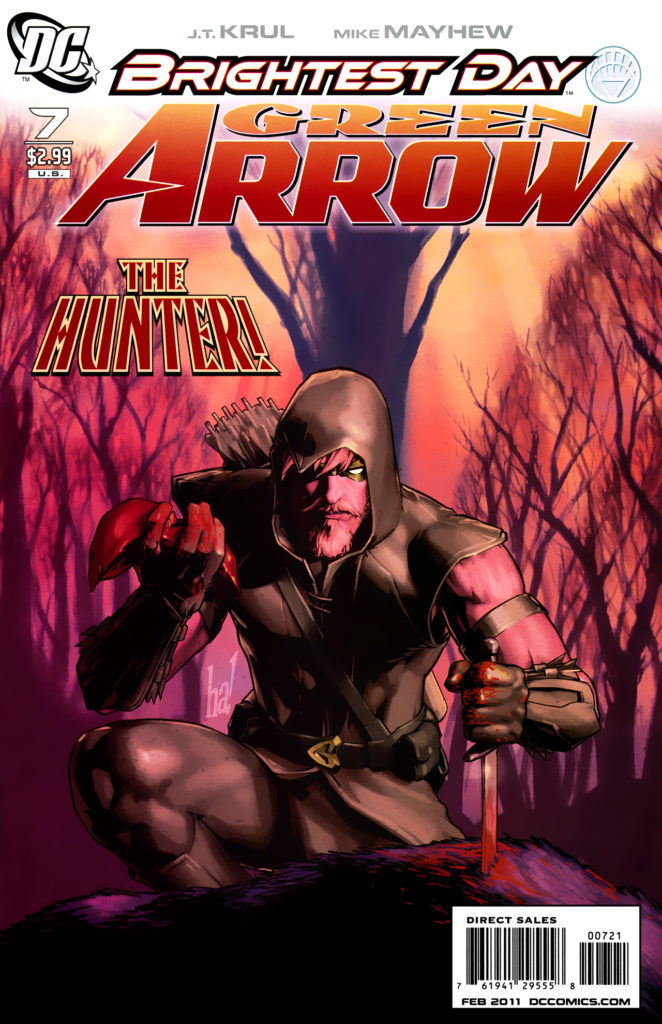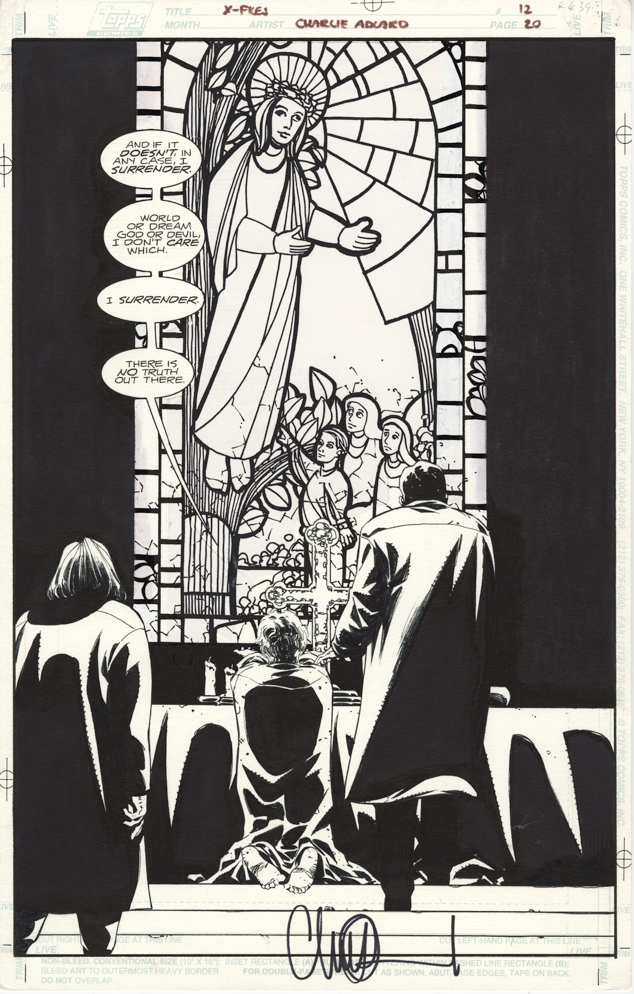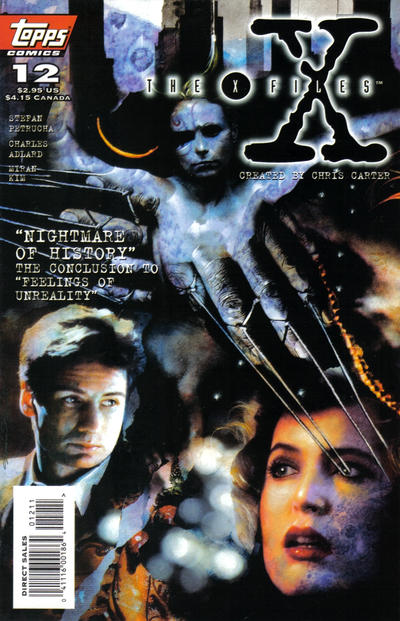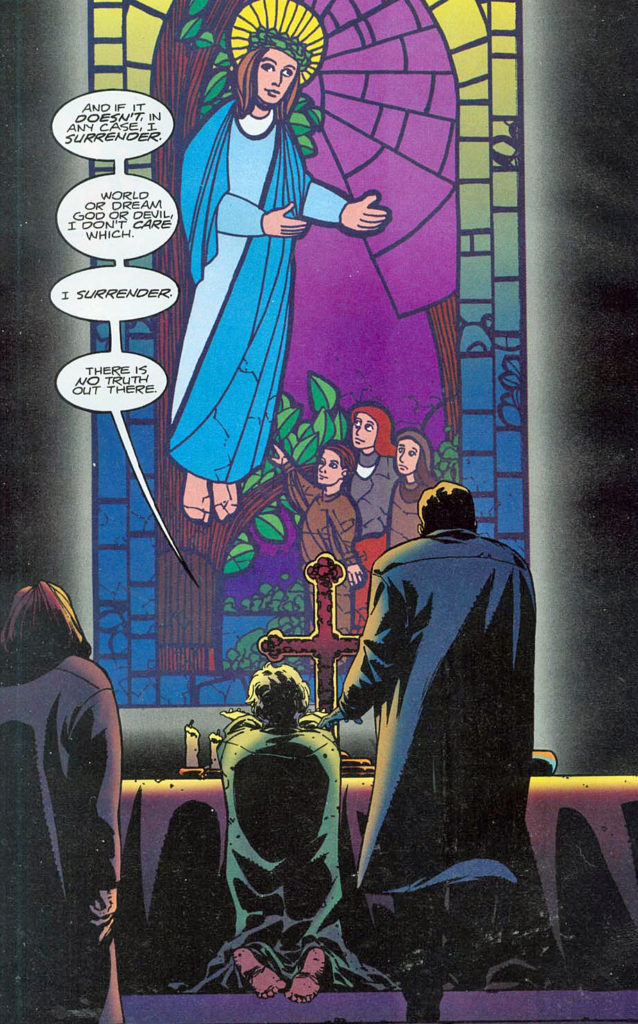Keith Giffen — Tribute To The King
Victory #1, April 1994
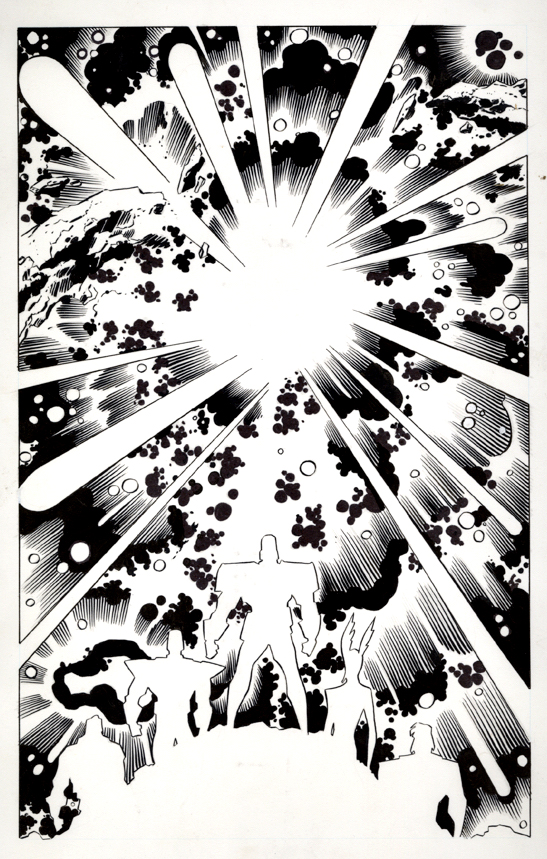
It was February 6, 1994. As we put the first (and it turned out, last) issue of Victory to bed at Topps Comics, the sad phone call came into our offices. The King had moved on — Jack Kirby had passed away at age 76.
Victory was supposed to be a monumental crossover project between all of Jack’s creator owned characters; the new ones we had already developed, and the previously existing ones that included Silverstar, and of course Captain Victory. It was going to be the event that shook the “Kirbyverse.” (I can’t remember who thought of that – EIC Jim Salicrup or myself, so we will each take have to take co-credit.)
Since the issue had not yet gone to press, we were able to include this lovely art memorial to Jack by Keith Giffen and Jimmy Palmiotti in the published issue, as well as a two-page editorial tribute written affectionately by Charlie Novinskie.
Although Jack was not directly involved in character or story development, he did enjoy being kept in the loop and, from the feedback we received, he enjoyed our efforts.
The challenge at the time of course, is that the marketplace didn’t enjoy our efforts quite as much as he OR we did. A year prior, we had launched the Kirbyverse with a bang. Four titles launched in April 1993, plus a freebie. Total circulation of the group: More than one million copies. (That is not a typo.)
But our titles launched with mostly retro styling, and the market was not interested in classic storytelling and clean draftsmanship. The market wanted the dynamism and styling of Image-type comics (preferably from Image itself; remember this was 1993). And the younger readers gobbling up Cyberforce and Spawn weren’t that interested in Jack Kirby.
From the moment we launched, sales of the Kirby titles dropped each month. By the time Victory project came to fruition, it was too late. Despite that issues #2 and #3 of the crossover were drawn, they never saw the light of day.
So ironically, and most definitely not intentionally, this version of the Kirbyverse was laid to rest at about the same Jack was.
But… did the King really die?
Captain America. The Hulk. The Avengers. The X-Men. The Eternals. Darkseid. The Black Panther. The Silver Surfer. Add a few hundred more, and you will just about scratch the surface of Kirby’s creative output.
The King lives on.
Long live the King.

